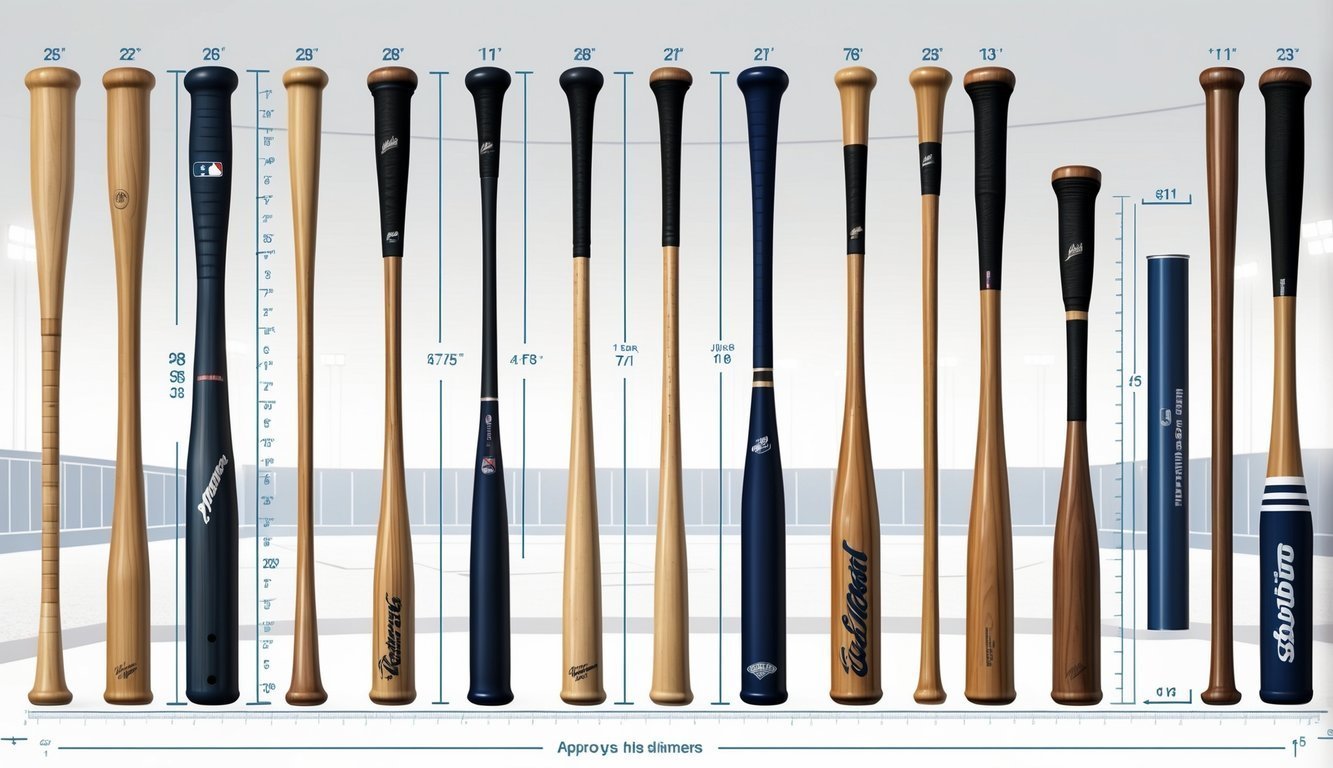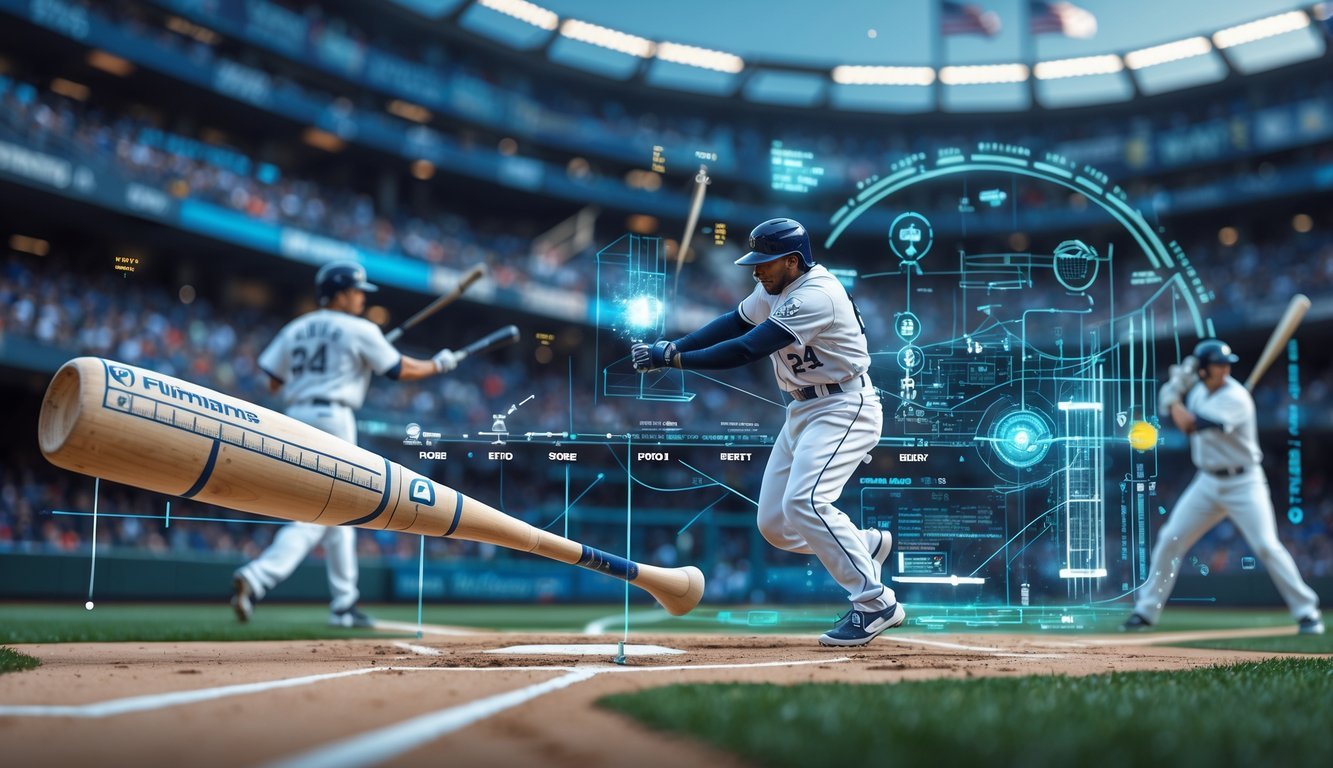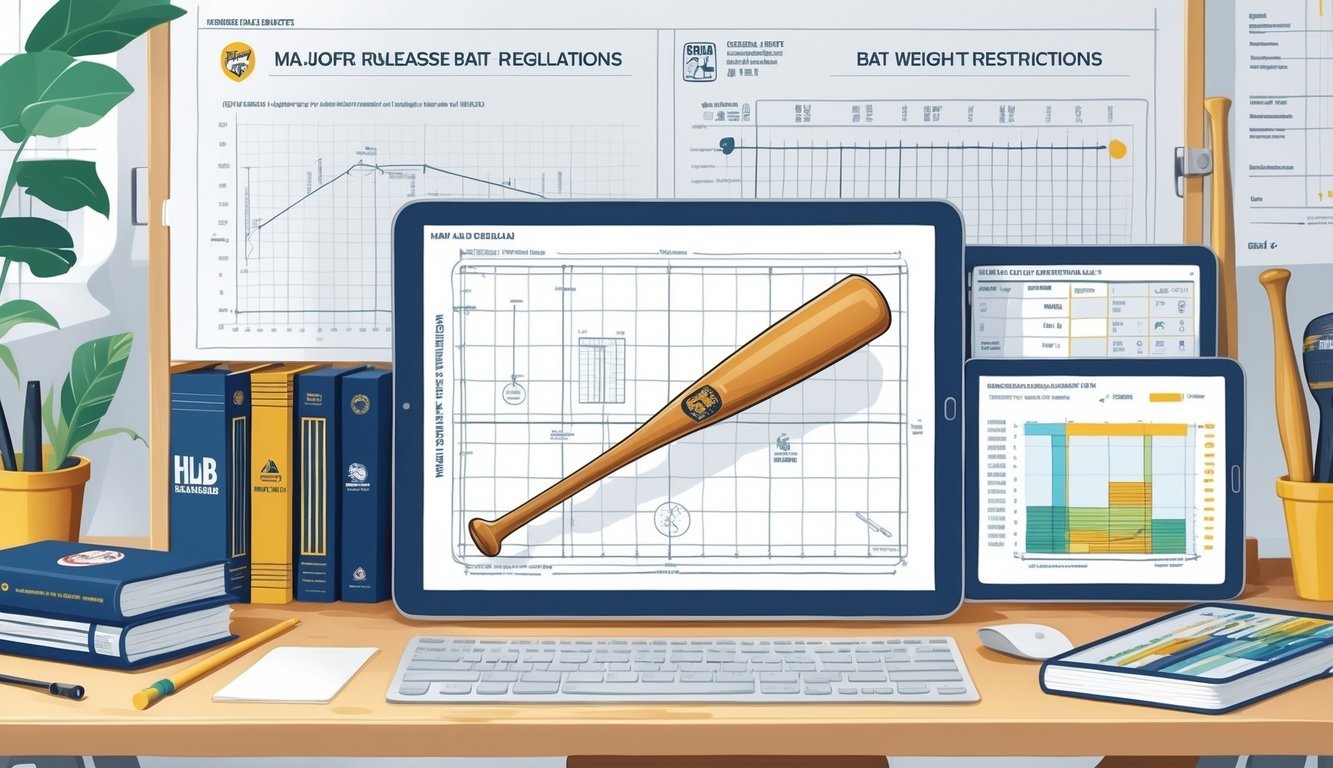PsychNewsDaily Publishers
100 Summit Drive
Burlington, MA, 01803
Telephone: (320) 349-2484
PsychNewsDaily Publishers
100 Summit Drive
Burlington, MA, 01803
Telephone: (320) 349-2484
Major League Baseball enforces strict bat regulations: maximum length of 42 inches, diameter of 2.61 inches, and only solid wood materials like maple, birch, or ash allowed.

If you’re into baseball, you probably get how important the bat is. But honestly, did you realize how strict the rules are about bat size?
In Major League Baseball, a bat can’t be longer than 42 inches or thicker than 2.61 inches in diameter. These rules keep things fair and, let’s face it, a lot safer for everyone.
MLB players can pick bats in different shapes and weights. Still, they have to stick to those limits.
You can tweak your bat to fit your swing, but you can’t ignore those basic size rules. Even though the regulations haven’t changed much in years, new technology keeps shaking things up.
Why do these rules matter, anyway? Well, understanding them helps you see how equipment shapes the sport and how players try to get the most out of every swing.

When you pick out a bat for pro baseball, you have to follow some pretty specific rules. MLB sets these to keep the game safe and honest.
The bat’s length, weight, materials, and even its finish all matter.
Major League Baseball uses Rule 3.02 to spell out what’s allowed. The committee insists your bat needs to be a smooth, round stick.
They won’t let you use a bat with dents or sharp edges that might mess with play or hurt someone.
You can’t mess with your bat’s shape or balance. If you damage or tamper with it, umpires can call your bat illegal.
You have to keep your bat up to standard all season long.
In the pro leagues, you have to use a bat made from a single piece of solid wood. Most guys go for maple, ash, or hickory.
Bamboo? Not allowed. MLB doesn’t permit metal, composite, or multi-piece bats either.
That’s different from youth leagues, where you might see non-wood bats all the time. Wood bats keep things consistent and stick to baseball’s roots.
Your bat can’t be longer than 42 inches or wider than 2.61 inches. That’s the line for every official MLB bat.
You’ll notice every handle has a knob at the end for grip and control. The whole bat should stay smooth and round—no weird shapes or bumps.
MLB doesn’t set a weight limit, though. Lighter bats swing faster, heavier bats hit harder—it’s your call.
Manufacturers usually print the length and weight on the bat, so you know what you’re getting.
You can’t paint your bat in a way that hides damage or makes it look suspicious. The league wants bats to stay smooth and clean, without sticky stuff that could mess up the ball or hurt someone.
Pine tar and rosin are fine, but only on the handle or grip. If you smear them all over, that’s a problem.
If you try to mess with the wood using chemicals or tools to make it break or hit differently, you’ll get in trouble fast.
Bat makers have to label bats clearly so you—and the league—know they’re legal.

Bats aren’t just gear—they shape how you play and what you expect from the game. Changes in bat design and rules can really shake up player performance.
The George Brett pine tar incident in 1983 is legendary. The Yankees called him out when they found too much pine tar on his bat, erasing his home run and sparking a wild argument.
Eventually, officials overturned the call, but it showed just how much bat rules can swing a game.
Players pay attention to moments like that. Pine tar helps grip, but you have to keep it within limits.
If you use illegal changes—like rubber grips or weird handles—you risk penalties and might mess up how the ball jumps off your bat.
MLB makes players stick to strict bat rules. Bats need to be smooth, round, and no bigger than 2.61 inches in diameter or 42 inches long.
Even so, designers keep pushing boundaries. The “torpedo” or “bowling pin” bat moves weight closer to the handle, making it feel lighter and boosting swing speed without breaking the rules.
You might notice more maple and birch bats these days. That’s because the emerald ash borer is killing ash trees, so players have to adapt.
Some guys even try new gear—like special shoes or undershirts—to get more comfort or power.
Baseball loves tradition, but it’s always looking for an edge. The bat you pick changes your power, speed, and control at the plate.

You might wonder about approved woods, bat sizes, or whether certain bat types are still allowed. Let’s clear a few things up.
MLB only allows bats made from one solid piece of wood. Maple, birch, and ash are the top picks.
They’re tough and perform well. Metal and composite bats aren’t allowed in official MLB games.
Most MLB bats land between 30 and 34 ounces.
The weight changes based on what the player likes and how long the bat is.
Bats can’t be longer than 42 inches.
The barrel has to be smooth and round, with a max diameter of 2.61 inches.
MLB doesn’t have a rule about weight drop (that’s length minus weight).
Players just pick what feels right, as long as they stick to the size rules.
Yep, MLB banned torpedo bats. These bats have hollowed or tapered barrels, which the league found unsafe and unfair.
Every bat in MLB has to be solid wood—no hollow barrels or sneaky modifications.
Rule 3.02 says that bats have to be a smooth, round stick.
They can’t be wider than 2.61 inches at their thickest point. Players also can’t use a bat longer than 42 inches.
Those guidelines help keep the game fair—and a little safer—for everyone.